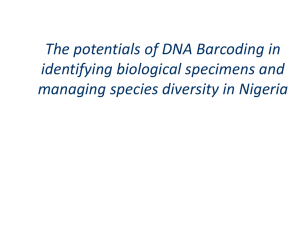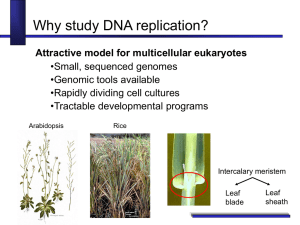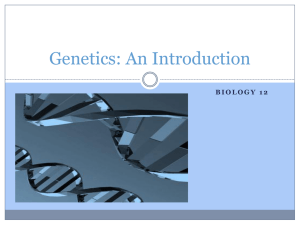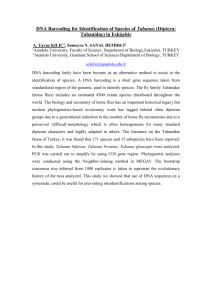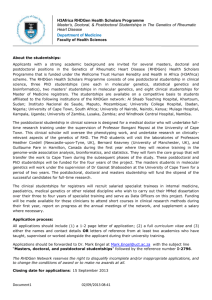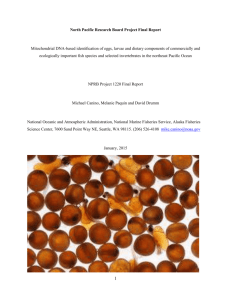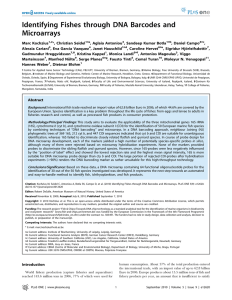Genetic_Research_Lesson2_Slides_NWABR
advertisement
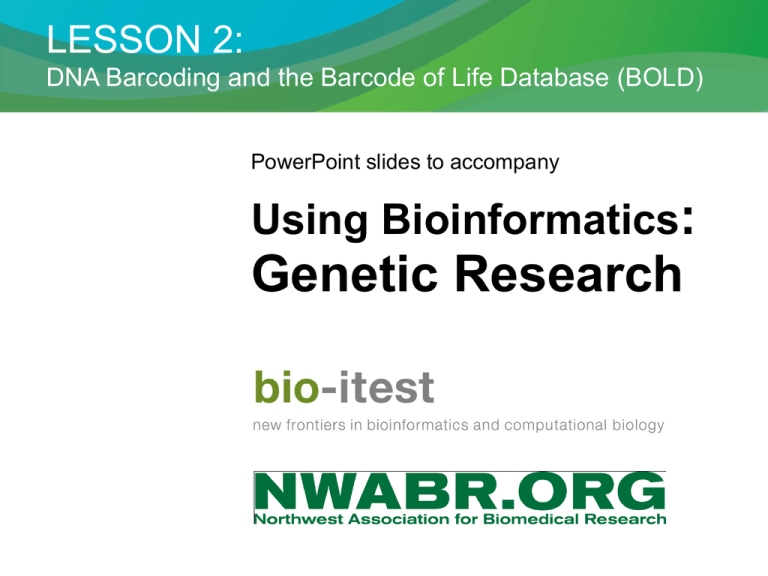
LESSON 2: DNA Barcoding and the Barcode of Life Database (BOLD) PowerPoint slides to accompany Using Bioinformatics: Genetic Research Postdoctoral Scientist, DNA and History KRISHNA VEERAMAH, PhD Place of Employment: University of California, Los Angeles (UCLA) Type of Work: Human population genetics, with emphasis on Sub-Saharan Africa I always liked genetics, but it wasn’t my first choice at school. I wanted to be a footballer (or soccer player), but… working with all these clever things like Y chromosomes possibly descended from the brother of Moses, I eventually started doing my own work and got wrapped into it. The Barcode of Life Project DNA Barcoding with Cytochrome c Oxidase subunit 1 (COI) The Ideal Gene to Study is… • Present in all species. • Variable, but not too variable. • Standardized among scientists around the world. The COI Gene… • All eukaryotes contain mitochondria; COI encodes a mitochondrial protein needed for cells to make ATP. • COI is almost identical within a species but varies between different species. • Agreement among scientists that the COI gene is used for animal barcoding. Basic Local Alignment Search Tool BLAST • Can be used to: – Compare 2 or more DNA sequences to each other. – Compare 2 or more protein sequences to each other. – Compare a single sequence to many sequences found in databases. • You will perform a nucleotide BLAST (blastn) search to find the best possible match for your unknown sequence. Predicting Evolutionary Relationships Which of the following animals do you predict to be most closely related and why? Group 1: Which species of primates are most closely related? Group 2: Which species of birds are most closely related? Group 3: Which species of fish are most closely related? Group 4: Which species of sharks and rays are most closely related? Group 5: Which species of reptiles are most closely related? Postdoctoral Scientist, DNA and History KRISHNA VEERAMAH, PhD Place of Employment: University of California, Los Angeles (UCLA) Type of Work: Human population genetics, with emphasis on Sub-Saharan Africa I always liked genetics, but it wasn’t my first choice at school. I wanted to be a footballer (or soccer player), but… working with all these clever things like Y chromosomes possibly descended from the brother of Moses, I eventually started doing my own work and got wrapped into it. CAREERS IN SPOTLIGHT: Postdoctoral Scientist, DNA and History What do they do? Postdoctoral Scientists are people with a PhD who desire more training. The DNA and History program at UCLA is unique – a result of the dramatic increase in DNA data and biotechnology. The increase in DNA data influences research beyond biology, into the humanities and social sciences, like the history of human populations. What kind of training is involved? Dr. Veeramah has a PhD and is doing additional training and teaching at UCLA. What is a typical salary for a Postdoctoral Scientist, DNA and History? The minimum salary for a Postdoctoral Scientist funded by the National Institutes of Health (NIH): Starting salary: $37,740 ($18/hour). 5 years of experience: $47,940 ($24/hour). Source: National Institute of Health

